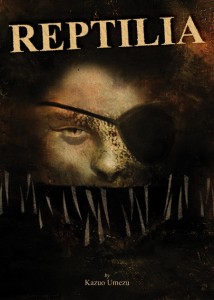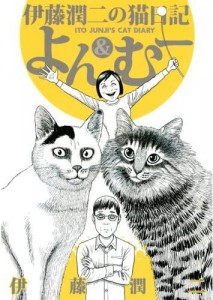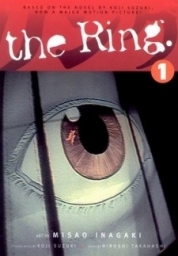 When one thinks of Horror fiction nowadays, it usually evokes images of monsters, serial killers, and lots of blood and gore. But that’s just a part of what makes up the horror genre.
When one thinks of Horror fiction nowadays, it usually evokes images of monsters, serial killers, and lots of blood and gore. But that’s just a part of what makes up the horror genre.
Let’s first look at a definition of Horror. According to the Merriam-Webster Dictionary, Horror is: “painful and intense fear, dread, or dismay”. So Horror isn’t a thing. It’s a feeling, an emotion that writers and artists try to elicit in the reader through their words and images. So, unlike genres such as sci-fi, fantasy or western, it isn’t limited to a time or place. One can feel horror, anytime, anywhere, though there are certain times and places that can create the emotion more easily than others. While many horror stories use the supernatural, such as ghosts, ghouls, vampires and monsters, they are not dependent on them. A horror story can take place in a mundane, ordinary world, just as well as it can in a world filled with zombies. The most common element mostly likely found in horror stories is a fear of the unknown, an emotion as old as man himself.
 The history of horror stories goes back long before writing, when man still passed stories along orally. Early stories were based in the folklore of a culture, often focusing on death, the afterlife and evil forces working against the living. The 18th century saw the birth of Gothic horror, which drew on these earlier sources. This tradition continued to the 19th century which featured both supernatural monsters and very human murderers. Modern horror in the US can be traced back to the success of Steven King, which created a sort of formula for horror stories. Whether it was for the good or ill of the genre, that is up to the reader to decide.
The history of horror stories goes back long before writing, when man still passed stories along orally. Early stories were based in the folklore of a culture, often focusing on death, the afterlife and evil forces working against the living. The 18th century saw the birth of Gothic horror, which drew on these earlier sources. This tradition continued to the 19th century which featured both supernatural monsters and very human murderers. Modern horror in the US can be traced back to the success of Steven King, which created a sort of formula for horror stories. Whether it was for the good or ill of the genre, that is up to the reader to decide.
In Japan, horror has a long tradition that dates back to the Edo and Meiji periods, though ghost stories are known to go back as far as the Heien period. Horror manga found a father in the works of Kazuo Umezu, in the 1960s. Among his better known works are the shojo Reptilia, Drifting Classroom, Scary Book and Cat-Eyed Boy, all of which have been made available in English. Junji Ito, who was inspired by Umezu, is another well-known creator who has had several works released in the US, including Uzumaki, Gyo, and the short story series Tomie. Ito has quite a talent for making even the cutest of things creepy, as in his series Cat Diary. It was also through manga that the folklore creatures known a yokai became popular again through Shigeru Mizuki’s GeGeGe no Kitaro.
 In the mid-ninties, Japanese horror, also known as J-Horror became popular with the adaptations of novels and original films. J-Horror differed from modern US horror in that it focuses more on psychological horror and tension. The most popular of these are The Ring, Ju-On: The Grudge, One Missed Call and Dark Water, all of which received US remakes. These all received the manga treatment, sometimes adapting the original novel, other times adapting the movies.
In the mid-ninties, Japanese horror, also known as J-Horror became popular with the adaptations of novels and original films. J-Horror differed from modern US horror in that it focuses more on psychological horror and tension. The most popular of these are The Ring, Ju-On: The Grudge, One Missed Call and Dark Water, all of which received US remakes. These all received the manga treatment, sometimes adapting the original novel, other times adapting the movies.
So, what is horror? It’s anything that inspires fear in the reader. Whether it’s through ghosts and monsters or people and things from the mundane and everyday, if it causes your heart to race, goosebumps to break out over your arms, or keep your light on at night, then it’s horror.
4 Comments
Hi, Lori! This is a very nice introduction to this month’s feast. Your definition of horror as “anything that inspires fear in the reader” is a very elegant one, and creates a lot of room under the tent for a variety of stories that might not immediately strike readers as horror.
One small thing: modern American horror fiction has deeper roots than Stephen King, as the publication of stories such as Washington Irving’s “The Legend of Sleepy Hollow” (1820) and Edgar Allen Poe’s “The Tell-Tale Heart” (1843) attest. Most of the tricks and twists you find in King’s writing were pioneered in these nineteenth-century works, something that I think King himself would acknowledge, given how articulate he is on the genre’s history.
Oh, I know it does, I was just trying to keep the article short. I could have gone on for a lot longer, but then probably wouldn’t have had time to write anything else! My definition of “modern” was in the last 30 years or so.
Fair enough! All my years of academic training have trained me to think of the last 300 years as the “modern” period, but you’re right–30 years is plenty modern for all of us.
Nice job hosting the MMF, by the way!
MMF: Horror Manga from A to Z